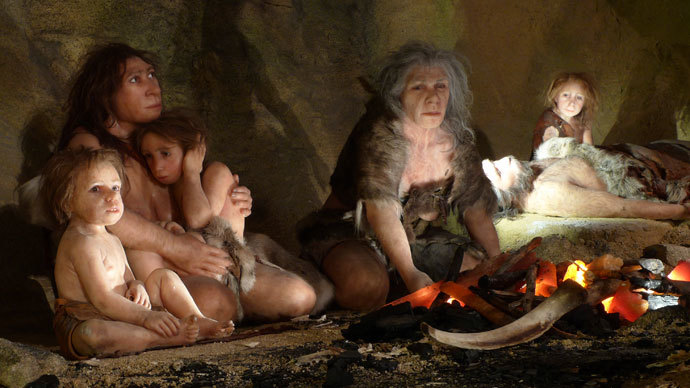Bone mystery: Did ancient humans have sex with other species than Neanderthals?

The knowledge of our human origins has taken a huge leap forward after anthropologists decoded the DNA of a bone as old as 400,000 years old, revealing that our ancestors may have had sex with more species of early humans than previously thought.
A bone was dug up at what appears to be an ancient burial site in Sima de los Huesos, in Spain. Its genome indicates that the early European was more closely related to a much earlier species of human dating as far back as 700,000 years ago than to our immediate ancestors, the Neanderthals. Neanderthals lived as recently as 30,000 years ago, before humankind’s modern incarnation, Homo sapiens, appeared on the scene. Homo sapiens were previously thought by scientists to have interbred with Neanderthals, but not with other hominid species.
The bone owes its good condition to the subterranean climate in the northern highland area of Sierra de Atapuerca. The find was at a depth of about 30 meters, where the temperature is a little more than 10 degrees Celsius.
Svante Paabo, director of the Max Planck Institute for Evolutionary Anthropology in Leipzig, Germany, was one of the key participants in the research, which was published in the journal Nature. He points out that the results extracted from the study of the bone “show that we can now study DNA from human ancestors that are hundreds of thousands of years old.”
That is a substantial achievement in itself, as such old DNA had until now only been studied when found in permafrost – mountain soil that is frozen over and allowing for preservation of bones and flesh, like the ones we often find when conducting animal studies.
But the technique does little to reduce the mystery the anthropologists are faced with now.
Sima de los Huesos – in English it can be translated as ‘Pit of Bones’ – is famous for harboring the largest collection of hominid fossils dating back anywhere from 100,000 to 700,000 years ago, to the Pleistocene period. Scientists have so far discovered 28 skeletons.
The individuals found there were previously thought to be ancestors to Homo heidelbergensis, which itself is thought to be a common ancestor to us – Homo sapiens – and our immediate cousins, the Homo neanderthalensis (Neanderthals).
According to later studies, Paabo and team assumed that this bone would share an ancestor with the Neanderthals.
But what the bone’s mitochondrial DNA (mtDNA) revealed after a couple of grams of bone powder were studied were more questions than answers.
They went about sequencing the genome from the mtDNA, which is passed down through the maternal line, and found a mysterious relation, after comparing their results with the modern human one, then that of an ape, a Neanderthal and a Denisovan.
The last on that list is a mysterious, recently discovered branch of Asian hominids considered to be a sister group to the Neantherthals. Therein lay the surprise: the studied sample was found to have a stronger relationship to the far-more distant Denisovans than to the Neanderthals, which still roamed the Earth some 30,000 years ago.
To put this into perspective, the previous oldest bone we have studied belongs to a Denisovan that dates back to 80,000 years ago – and is also the oldest DNA we had studied until now.
Furthermore, this comes on the heels of another recent and no less staggering revelation.
"The fact that the mtDNA of the Sima de los Huesos hominin shares a common ancestor with Denisovan rather than Neanderthal mtDNA is unexpected since its skeletal remains carry Neanderthal-derived features," said Matthias Meyer, a co-author of the study.
This could mean one of several things: that the newly discovered Spanish bone could belong to an ancestor of both the Neanderthals and the Denisovans; another is that an entirely new branch of hominids is in question – one related to the Denisovans.
Director at the Center for Research on Human Evolution and Behaviour in Madrid, Juan-Luis Arsuuga explained the result as pointing to a “complex pattern of evolution in the origin of Neanderthals and modern humans.”
This is just the latest in a series of startling recent discoveries that put into question our origins, pattern of movement, as well as inter-breeding.














